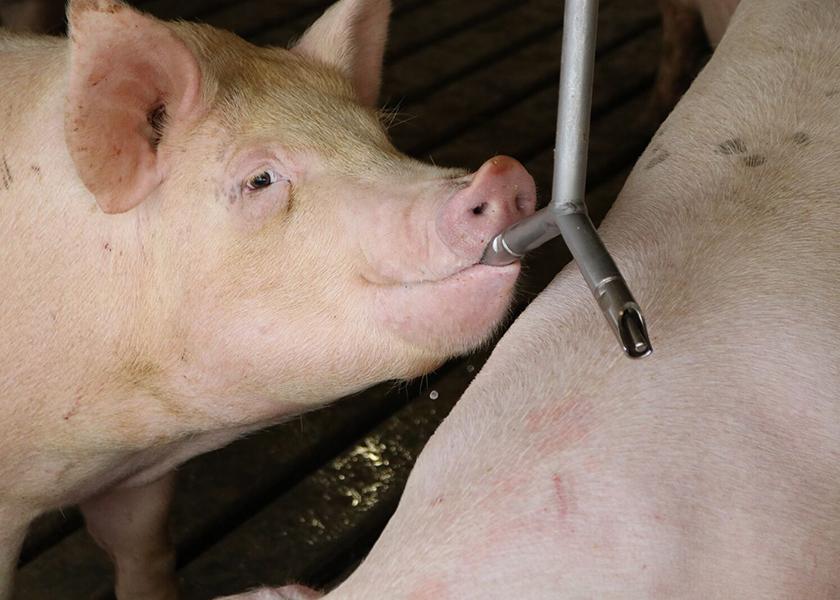Don’t Forget the Most Important Nutrient in the Nursery

By Laura Greiner, Iowa State University
Water is often the forgotten nutrient in swine programs. However, an animal that isn’t drinking will not eat. In addition, water quality can impair nutrient absorption and improperly maintained facilities could cause water wastage leading to a higher level of manure being produced. This results in more ground and natural resources needed to apply the extra manure to the soil. It is important to evaluate equipment and water management at the beginning of each fill of a barn.
Here are six ways to make sure pigs are getting the best start possible in the nursery.
1. Clean water lines.
Bacterial biofilms will buildup in water lines over time. While biofilms can be beneficial, some may not be. For example, E. coli may reside within the biofilm in the water lines and become difficult to break apart with the typical chlorinated water treatments. The use of products like citric acid and hydrogen peroxide can breakdown the matrix and allow for these organisms to be released from the water line. It is important to remember to open up the end of the water line either through a valve or the last water nipple and allow the treatment to run for a period of time to ensure that the material is adequately removed from the water line and not being pulled down into individual water nipples that can become clogged. Once the procedure is complete, always check all water nipples to ensure that there are no existing clogs from this process.
2. Repair leaks and broken water nipples.
Water conservation is important for various reasons. Protecting the environment should be a key component to any business. Water lines that are leaking eventually result in water flowing into the pit. This water becomes part of the manure and will have to later be applied to ground. The more manure, the more ground needed and thus more gas to apply that manure resulting in lower conservation of natural resources.
3. Check water flow.
Water flow in the nursery should be approximately 2 cups of water (1 pint) per minute. Too low of a flow rate will reduce pig feed intake. Pigs will drink approximately 10% of their body weight.
4. Drip water for the first few days.
As mentioned above, animals will not eat if they are not drinking. The piglet has many items to address in its first few days after weaning: finding a food source, identifying water source and managing the social hierarchy occurring within the pen. One item that can be done for a short period of time is to drip water nipples to allow for piglets to identify the water source easier. The faster the piglet finds water, the sooner it will start to eat which reduces the risk of enteric pathogens from becoming an issue.
5. Flush lines after water meds.
Some water medications or water additives can have a “sticky” nature to them. This material will build-up within the water lines and contribute to the biofilm as well as potentially reduce water pressure and clog water nipples. Flushing water lines with citric acid helps reduce this problem.
6. Conduct water quality tests.
Understanding water quality is important when working with livestock. Water can be high in salt or sulfur, which can cause pig scours. In addition, water may contain certain minerals such as iron, which can reduce vitamin and nutrient absorption.
Overall, understanding the water that the pig is consuming, along with properly managing the equipment within the barn, will ensure that the piglets have the best start in the nursery.
Laura Greiner is an assistant professor in animal science at Iowa State University where her focus is on swine production and nutrition.
More from Farm Journal's PORK:
Why Aren’t Your Pigs Drinking Water?







